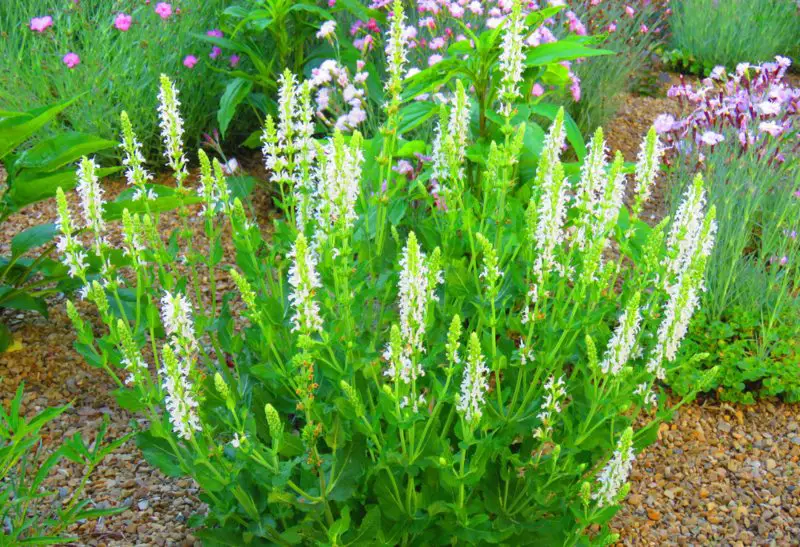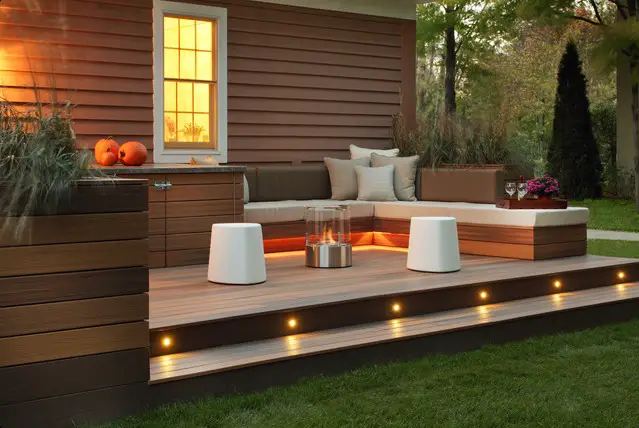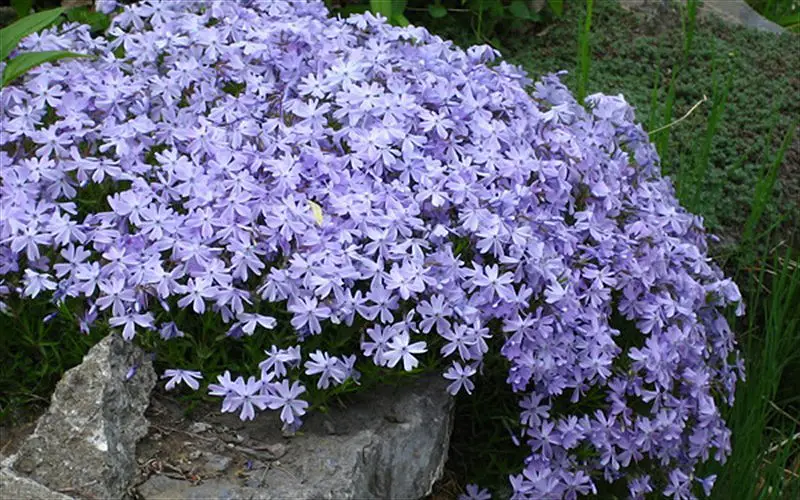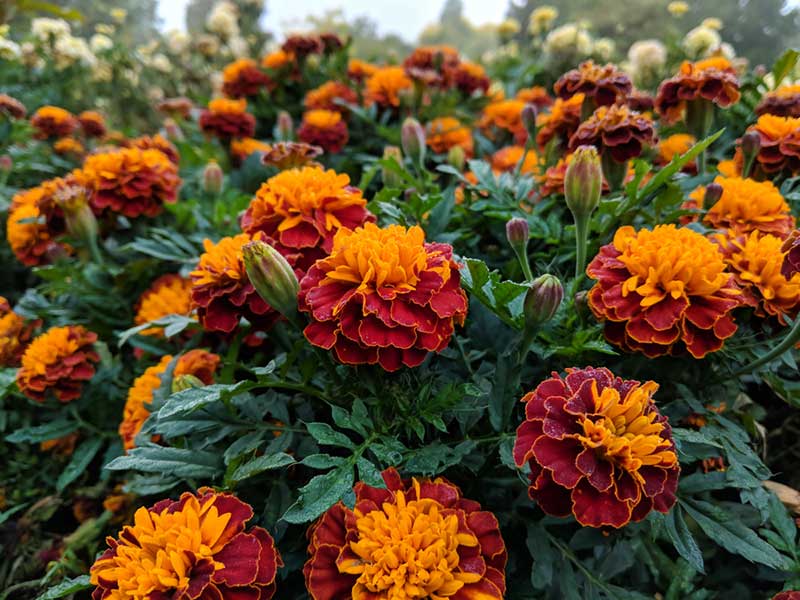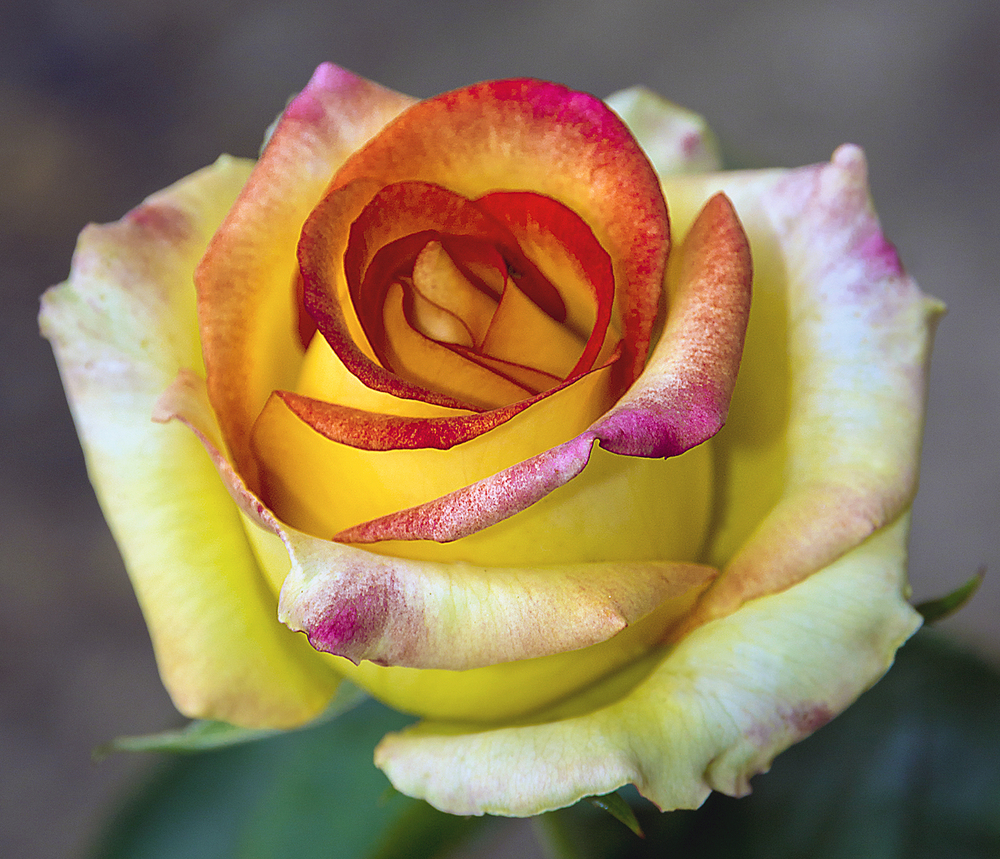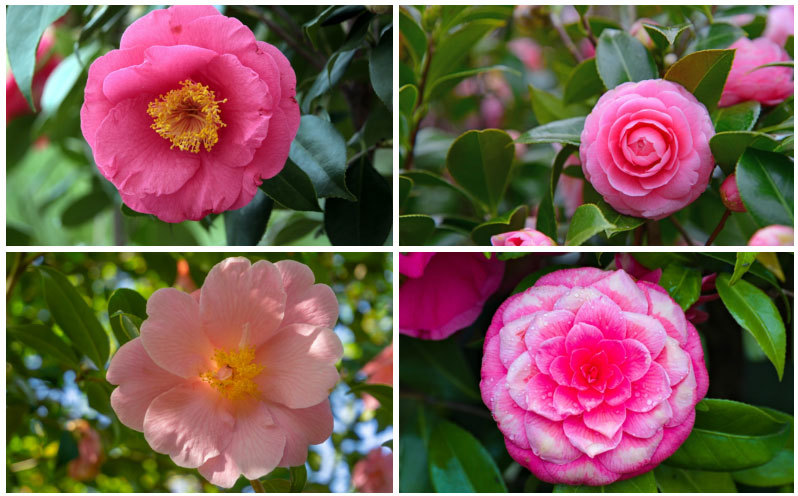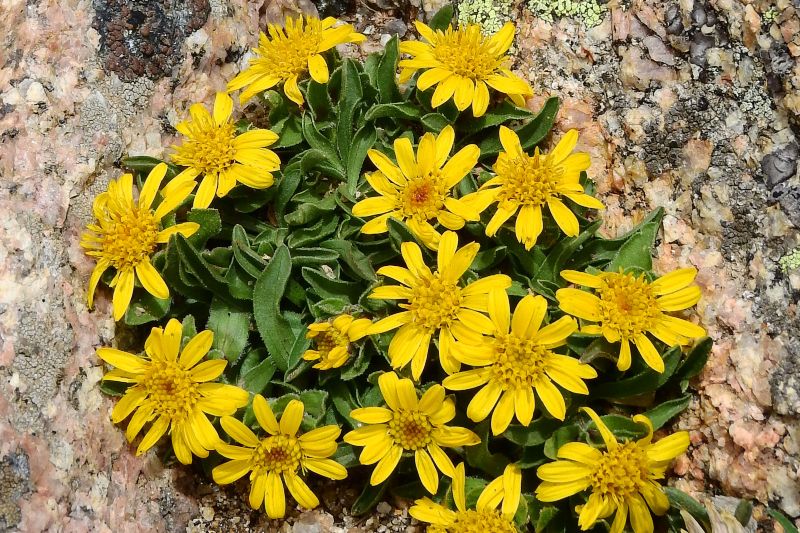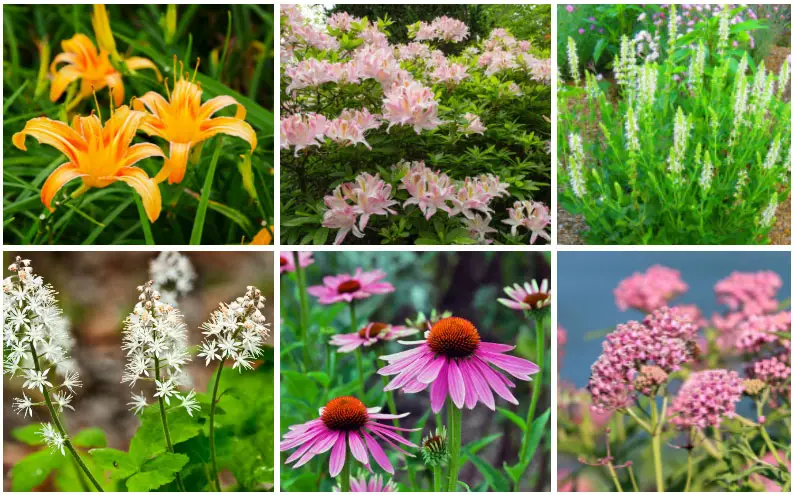
If you have a sunken area in your landscaping where the water loves to pool after a rainstorm, then a rain garden may be a perfect solution.
There are many different plants that you can grow in this area. Many of them are native plants, which usually have fewer disease and insect problems.
Planting a rain garden also gives the water longer to soak into your ground, which may benefit all your landscaping. Choose plants that you love and will flourish in your area.
Bluestar (Amsonia)
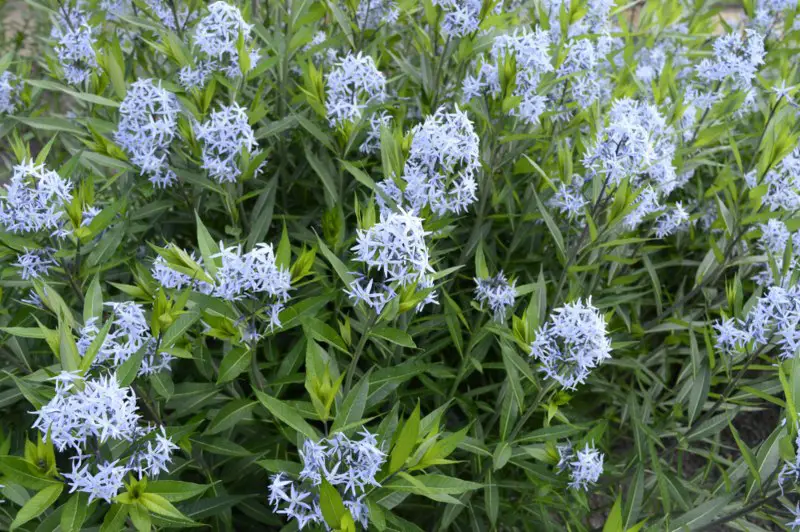
There are several varieties of bluestar flowers, with most of them preferring to be planted in loamy soils. This plant that grows well in zones 3 to 9 produces soft blue flowers in a star shape throughout the late spring and early summer. These flowers grow to be about 3-feet tall and 2-feet wide. They are sun-loving plants that make a lovely addition to your rain garden.
Swamp milkweed (Asclepias incarnata)
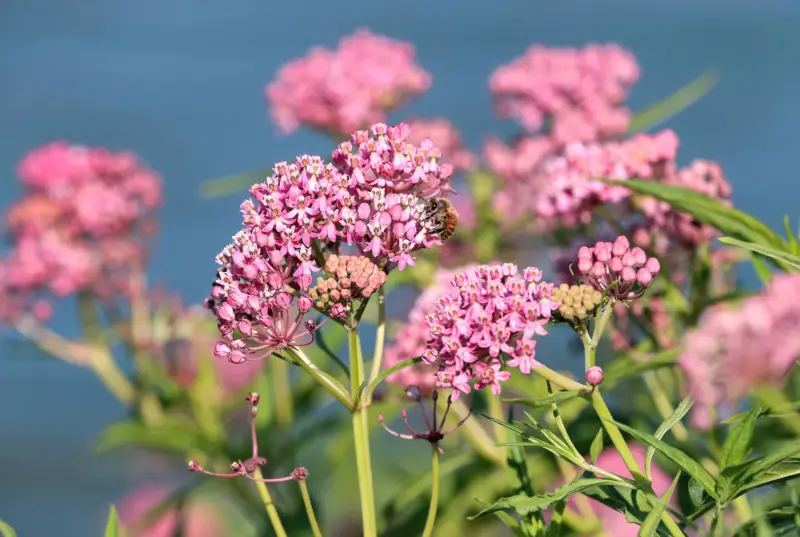
The swamp milkweed grows to be about 5-feet tall and 3-feet wide. This plant that thrives in zones 3 to 6 produces pink to mauve flowers in the summer. You can also find white options. Each flower has five reflexed petals surrounding a raised center. This plant has narrow, lance-shaped leaves that can be up to 6-inches long.
Joe Pye weed (Eupatorium)
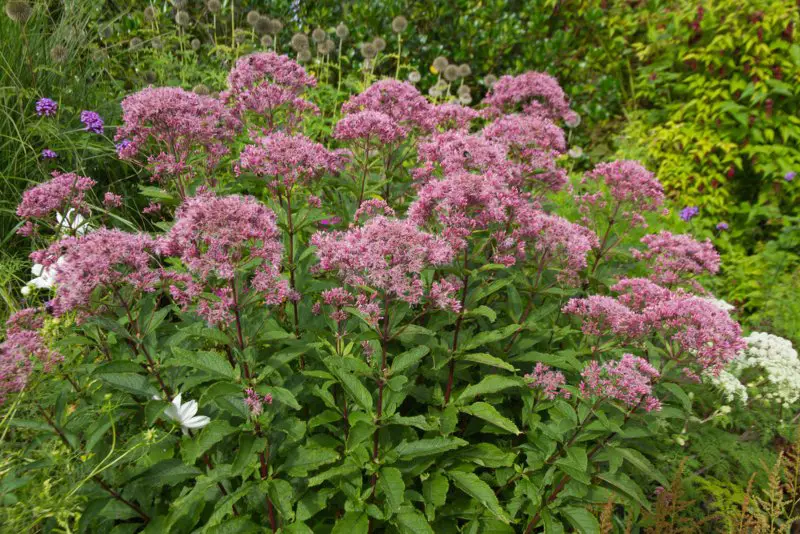
There are about 50 types of Joe Pye weed. This plant, which is a member of the aster family, grows in zones 4 to 9. While this clump-forming perennial prefers full sun, it will grow in partial shade. Small purple flowers appear in terminal clusters on this plant in mid-summer and last until early fall. Once the flowers fade, this plant produces colorful seed heads that stay throughout the winter. This plant has lance-shaped, dark green leaves that are about 12-inches long.
Coneflower (Echinacea purpurea)
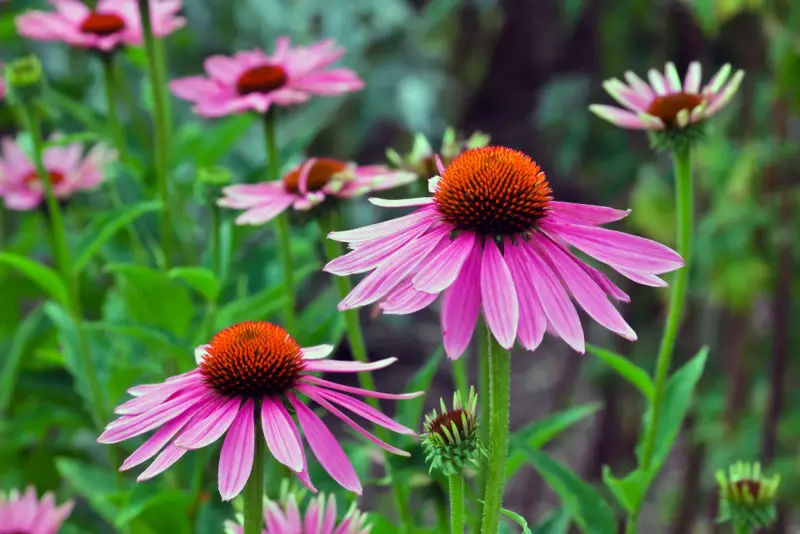
There are over 35 types of coneflowers, so you can easily find one perfect for your rain garden. Generally, these daisy-like flowers grow to be about 2-feet tall in zones 5 to 8. The flowers on the end of the stems often reach 5-inches in diameter, and they consist of petals surrounding a raised center. While the purple coneflower is the best known, you can find many different color choices in this summer-blooming plant, including white, yellow, red, orange and many others. The petals can be single, double or arranged to look like a carnation.
Summersweet (Clethra alnifolia ‘Hummingbird’)
Gardeners in zones 5 to 9 may want to consider the summersweet. This flower grows to be about 4-feet tall blooms in the late summer. Each raceme of flowers contains hundreds of little flowers and is about 6-inches long. The narrow, upright panicles give way to dark seedpods that can last throughout the winter months. This plant has dark green leaves that turn glorious shades of yellow in the autumn.
Lady Ferns
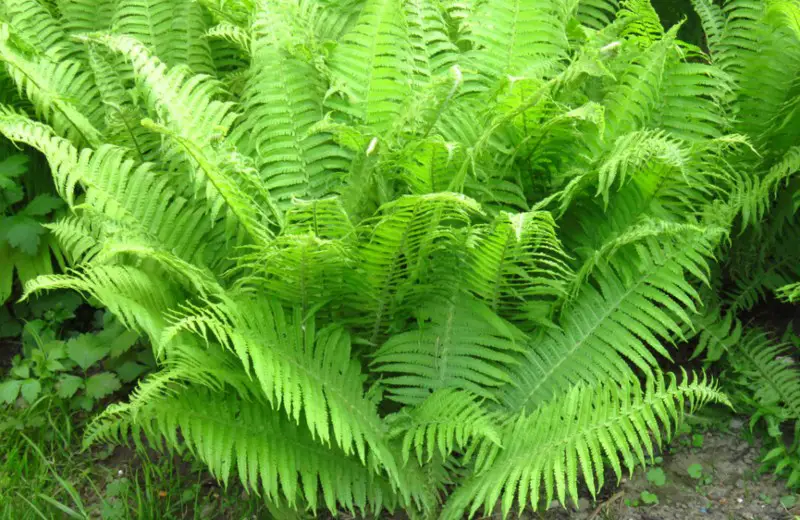
The non-flowering lady fern grows in zones 4 to 8. This shade-loving plant must be consistently moist to thrive, so do not let the ground in your rain garden dry out. Each of the fonds on this plant consists of about 25 oblong sub-leaflets. This plant that grows to be about 3-feet tall often spreads to be about 2.5-feet wide.
Astilbe
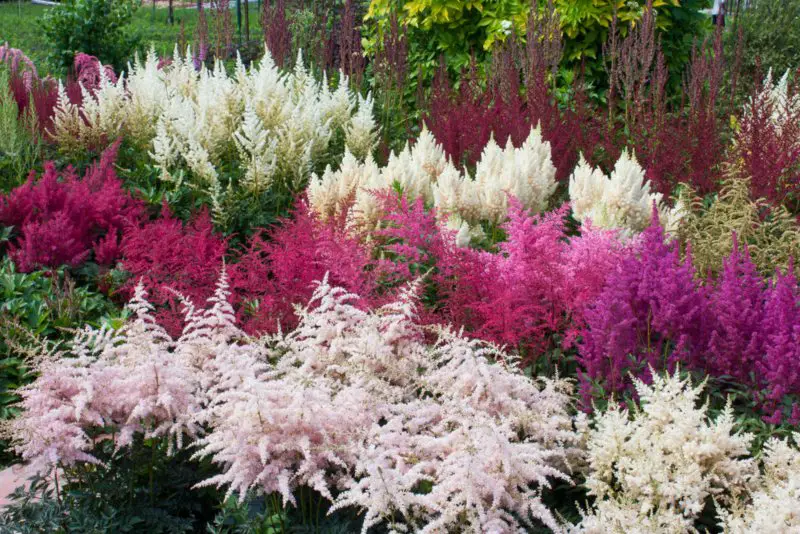
There are over 35 types of astilbe that grow in zones 4 to 8. These plants that usually grow to be about 2-feet wide and tall produce plume-like panicles of tiny flowers rising above the mound of basil leaves on bright green stems. Most varieties of astilbes are some shade of lilac. The different hybrids often have different leaf shapes and colors.
Daylilies
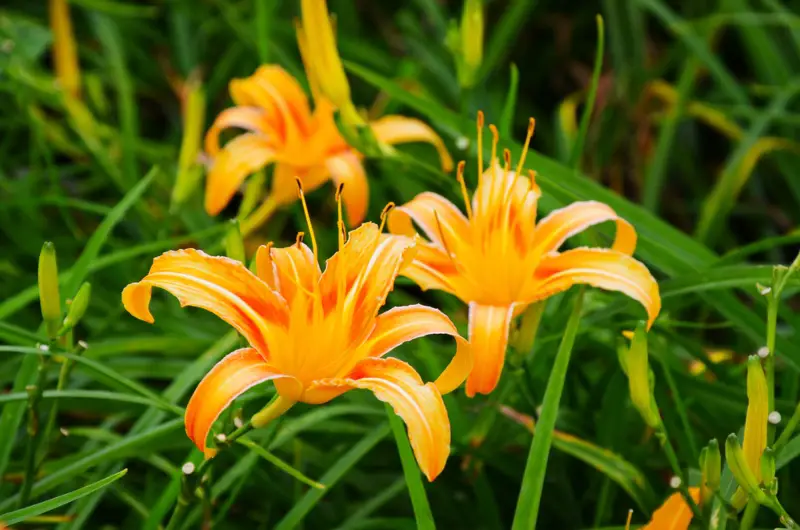
There are at least 35,000 registered cultivators available. Most grow in zones 3 to 9. They get their name from the fact that each flower lasts about a day, but more than one flower may grow on a stem over this plant’s late summer growing season. These flowers are highly adaptable, so they make a perfect choice for your rain garden. You can find very rounded bloomers, options with ruffled edges, ones that resemble spiders and many other choices.
Coral bells (Heuchera sanguinea)
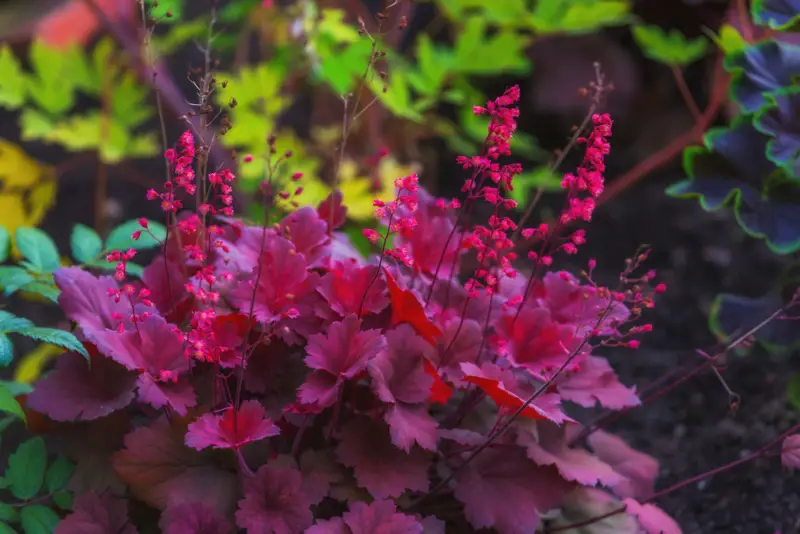
Coral bells is a long-blooming perennial that gardeners in zones 3 to 8 will want to consider. This erect plant usually grows to be about 18-inches tall. It produces bell-shaped, pink to purple flowers in May. If you deadhead these flowers, this plant is likely to keep blooming until autumn. Unless a hard freeze occurs, the foliage stays evergreen throughout the year.
Foamflower (Tiarella cordifolia)
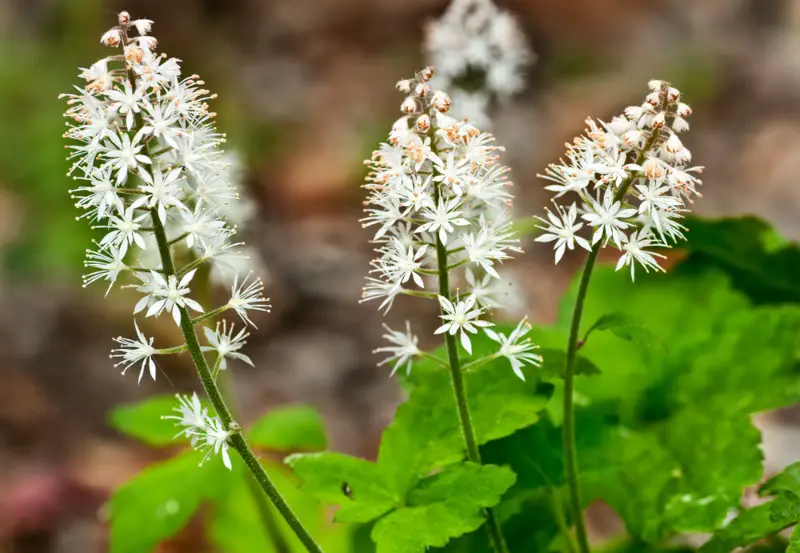
Foamflower is a clump-forming plant that loves the shade. This plant grows in zones 4 to 6. This flower puts on tiny white flowers with long stamens that have a foamy appearance in late spring. This plant’s foliage starts out green with hints of red along its veins. Then, in the fall, it turns reddish-bronze until the spring when green leaves appear again.
Cardinal flower (Lobelia cardinalis)
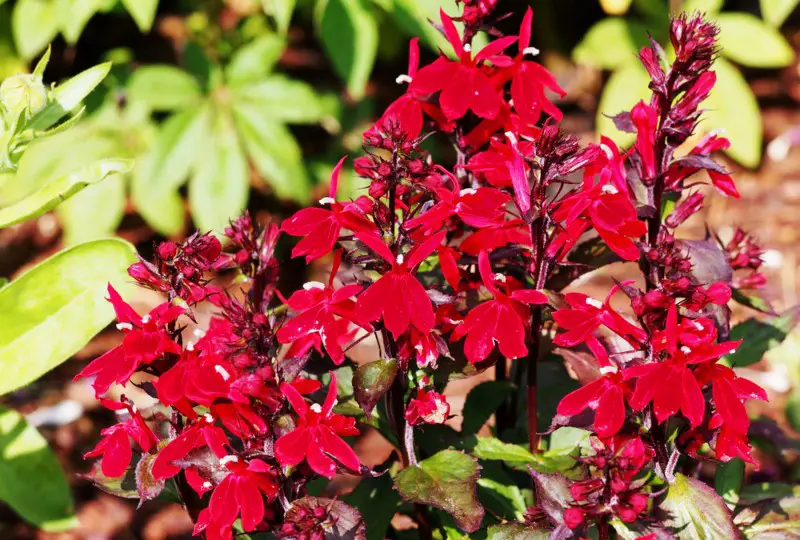
Gardners in zones 4 to 9 will want to think about planting cardinal flowers. These flowers are available in bright red, white and pink. They grow to be about 4-feet tall and produce two-lipped, tubular flowers in the late summer. This plant that will grow in almost any light conditions also has lance-shaped leaves that can be up to 4-inches long.
Rhododendron canadense
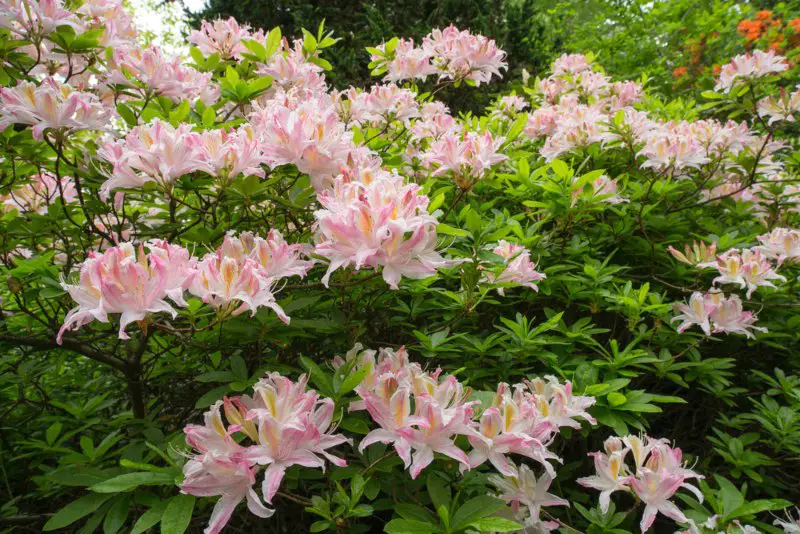
The showy flowers on Rhododendron canadense, often called deciduous azalea, make them a favorite of many gardeners in zones 4 to 8 who establish a rain garden. The feathery flowers on this option purplish-pink with yellow spots on their dorsal lobes. The flowers appear in mid-spring and last for a couple of months. The leaves on this option are bright green. This perennial often sheds its leaves in the winter unless the weather stays exceptionally mild.

